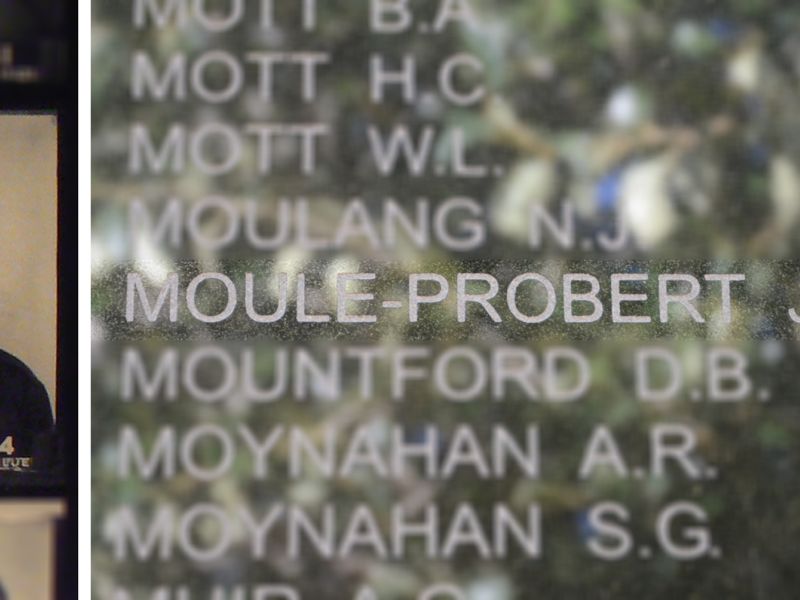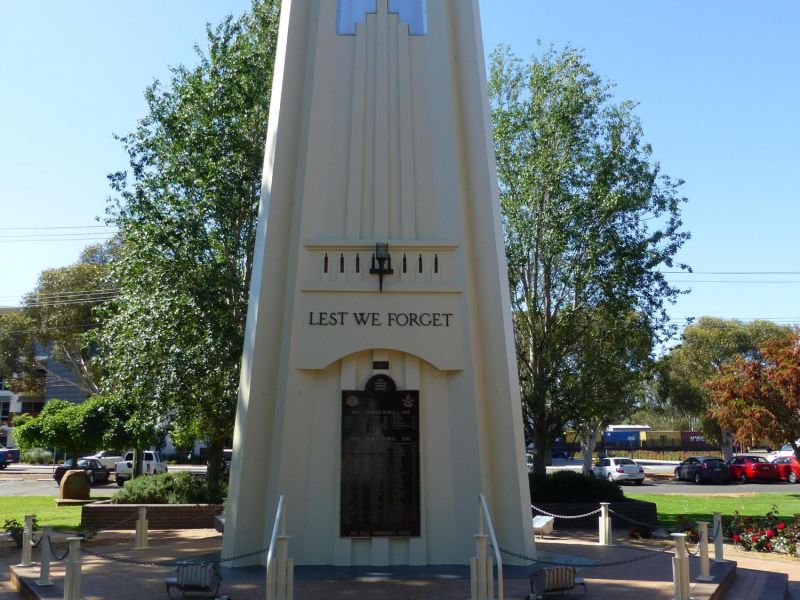A name on polished granite
In the Australian War Memorial, among the 1,787 faces displayed in the Sandakan gallery, is the face of a man noticeably older than those around him. His eyes are cast down, not looking at the camera, perhaps fearing the camera could reveal his true identity.
The soldier is like so many of those around him yet so very different and his life journey, to his death from disease in the jungles of Borneo, was certainly unique.
The man in the photo, commemorated on a polished granite stone at the Griffith Cenotaph, is John Moule-Probert. He began life as John William Probert on 15 November 1893 at Elsternwick, a suburb of Melbourne. His early years were shaped by encounters with the law, a series of petty offences that led finally to imprisonment in Goulburn gaol.
On his release he left for England, where he joined the British Army. When war broke out his unit was sent to France. There he was awarded the Military Medal for actions during the Battle of Le Cateau. Shortly after, he was taken prisoner by the Germans and remained a prisoner until September 1917, when he successfully escaped from the Doberitz prison camp.
Probert transferred to the Royal Flying Corps, qualified as a pilot and was commissioned. Supplementary records indicate that he was also awarded the Military Cross, possibly for his escape from the prisoner of war camp. Seriously injured in an aircraft crash, Probert was repatriated to Australia after his recovery.
The association with Griffith began with Probert taking up a soldier-settler property at Rankin Springs, near Griffith. Conditions on the land were harsh and despite some farming success, the effects of the Depression and drought forced the family to give up farming and instead turn to operating a farmers' produce store at Griffith.
A pilot officer in the Royal Australian Air Force Reserve, Probert was called up for full-time duty in September 1939 but was subsequently discharged as medically unfit. In April 1940, he understated his age and enlisted in the Australian Imperial Force (AIF). He arrived in the Middle East in September. Possibly because his correct age was discovered, he was returned to Australia and discharged in January 1941 “not on account of misconduct”.
In April 1941, he hyphenated his surname by adding one of his father’s names, again understated his age and re-enlisted in the AIF as John Moule-Probert. He was sent to Singapore in August 1941 and there he again became a prisoner of war when Singapore was surrendered on 15 February.
Along with almost 1500 fellow prisoners, Moule-Probert was sent to Sandakan, British North Borneo as part of 'B' Force in July 1942. By 1945, the Australian and British prisoners were ill-treated, starved and critically ill with tropical diseases. John Moule-Probert died from malaria on 10 May 1945, on the second death march to Ranau. He has no known grave but is commemorated on the Labuan Memorial, Sabah, Malaysia and on a polished granite memorial stone at Griffith.

 Henry C Moulds
Henry C Moulds